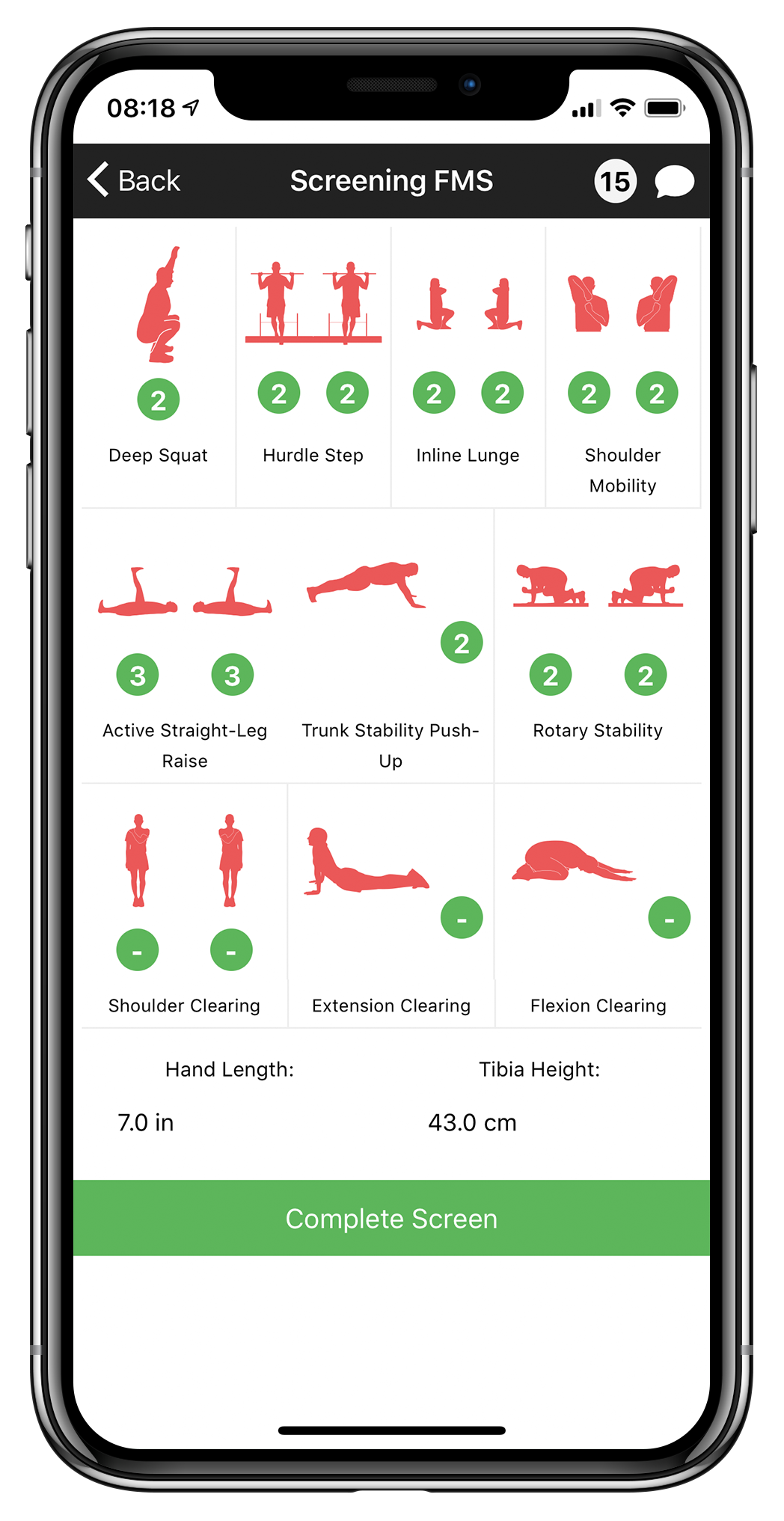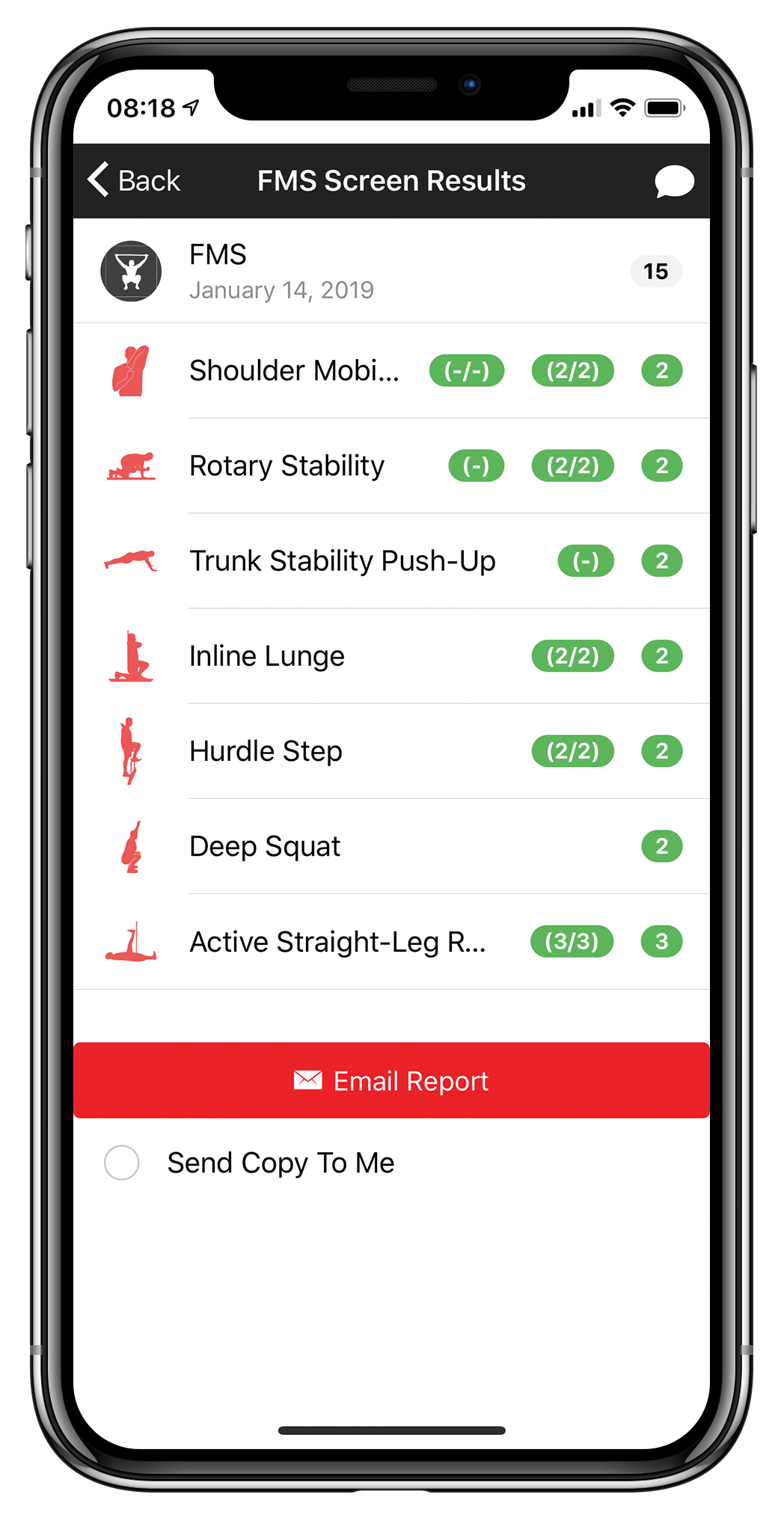The Momentum of Perspective
Posted by Gray Cook
Customer Support and Corporate Sales Specialist, Christina Byrd, is a 29-year-old avid runner and extremely active person. Christina's goals are to be more aware of her movement quality and keep herself in top condition as she ages. Because Christina is not in rehab and is not experiencing pain, the Screen is her starting point. Follow Christina’s movement journey here as we kick off with the Functional Movement Screen (also known as the FMS or the Screen).
First up: the Functional Movement Screen
Christina cleared all seven of the FMS tests with 2’s and 3’s (scores displayed in the app below). Remember, the goal of the FMS is no pain, no 1's and no major asymmetries. With that in mind, and in analyzing Christina's solid Screen scores, she is clear to train and work toward her fitness goals.
We also went ahead and checked Christina's breathing function, which we anticipated would be good (and it was). The Breathing Screen takes about five minutes and provides another layer of information that is extremely helpful for professionals in their initial consultation with a client, patient or athlete. We know that breathing affects movement quality and when breathing is the primary issue and is corrected, movement improves. Therefore, we want to correct breathing dysfunction first and then recheck movement quality. Since this was Christina's initial consultation, we conducted all screens and tests to collect comprehensive information about her.


Because of Christina’s athleticism and fitness aspirations, we advanced her into performance testing geared toward higher level athletes, the Fundamental Capacity Screen (FCS). For those of you who are FCS certified, this is your opportunity to take a more in depth look at your clients' abilities in the fundamental forms of movement that are key elements to performance. Christina's FCS revealed an ankle mobility restriction that was evident in other areas of the FCS such as explosive, postural and impact control.
We're adding in more layers of ankle mobility and motor control exercises to not only target Christina's left ankle, but also to enhance both sides to optimize her athleticism overall. In addition to last week's program, we're adding in a step up toe, then calf, raise using the band to challenge her foot, ankle, knee and hip alignment (and will work in weights as she progresses) in order to reset her old patterns.
Next, we'll incorporate the balance beam to achieve active rest to encourage strength as Christina continues to run. The balance beam stride exercise (including a backward stride) encourages hip extension. Christina will likely need the dowel for balance initially, and will work her way to balancing without the stick and then can incorporate weight after she has mastered balancing her own body weight.
Christina has shown great progress in her ankle mobility testing thus far. The plan is to add in some basic stability activities and continue working on her ankle. As an avid runner, our focus is to make sure Christina maintains optimal function in her ankle so she can get the most out of her runs.
Check out the video with suggestions on how to ensure she gets what she needs for stability and mobility to keep her on a fit and healthy path. And hear from Christina how the last four weeks have made a difference in her performance, both at rest and on the jogging trail.
Posted by Gray Cook
Posted by Marc Perry